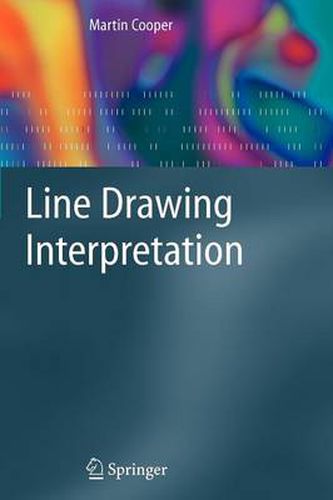Readings Newsletter
Become a Readings Member to make your shopping experience even easier.
Sign in or sign up for free!
You’re not far away from qualifying for FREE standard shipping within Australia
You’ve qualified for FREE standard shipping within Australia
The cart is loading…






This title is printed to order. This book may have been self-published. If so, we cannot guarantee the quality of the content. In the main most books will have gone through the editing process however some may not. We therefore suggest that you be aware of this before ordering this book. If in doubt check either the author or publisher’s details as we are unable to accept any returns unless they are faulty. Please contact us if you have any questions.
The computer interpretation of line drawings is a classic problem in arti?cial intelligence (AI) which has inspired the development of some fundamental AI tools, including constraint propagation, probabilistic relaxation, the characte- zation of tractable constraint classes and, most recently, the propagationof soft constraintsin?nite-domainoptimizationproblems. Line drawinginterpretation has many distinct applications on the borderline of computer vision and c- puter graphics, including sketch interpretation, the input of 3D object models 1 and the creation of 2 D illustrations in electronic documents. 2 I hope I have made this fascinating topic accessible not only to computer scientistsbutalsotomathematicians,psychologistsandcognitivescientistsand, indeed, to anyone who is intrigued by optical illusions and impossible or - biguous ?gures. This book could not have been written without the support of the CNRS, theFrenchCentreNational deRecherche Scienti?que,who?nancedmyone-year break from teaching at the University of Toulouse III. The UK Engineering and Physical Sciences Research Council also ?nanced several extended visits to the Oxford University Computing Laboratory. Section 9.1 is just a brief summary of the results on tractable constraints that have come out of this very productive joint research programme with David Cohen, Peter Jeavons and Andrei Krokhin. The various soft arc consistency techniques described in Chapter 8 were developed in collaboration with Thomas Schiex and Simon de Givry at INRA, Toulouse. I am also grateful to Ralph Martin and Peter Varley for their comments on the line-labelling constraints presented in Chapter 3.
$9.00 standard shipping within Australia
FREE standard shipping within Australia for orders over $100.00
Express & International shipping calculated at checkout
This title is printed to order. This book may have been self-published. If so, we cannot guarantee the quality of the content. In the main most books will have gone through the editing process however some may not. We therefore suggest that you be aware of this before ordering this book. If in doubt check either the author or publisher’s details as we are unable to accept any returns unless they are faulty. Please contact us if you have any questions.
The computer interpretation of line drawings is a classic problem in arti?cial intelligence (AI) which has inspired the development of some fundamental AI tools, including constraint propagation, probabilistic relaxation, the characte- zation of tractable constraint classes and, most recently, the propagationof soft constraintsin?nite-domainoptimizationproblems. Line drawinginterpretation has many distinct applications on the borderline of computer vision and c- puter graphics, including sketch interpretation, the input of 3D object models 1 and the creation of 2 D illustrations in electronic documents. 2 I hope I have made this fascinating topic accessible not only to computer scientistsbutalsotomathematicians,psychologistsandcognitivescientistsand, indeed, to anyone who is intrigued by optical illusions and impossible or - biguous ?gures. This book could not have been written without the support of the CNRS, theFrenchCentreNational deRecherche Scienti?que,who?nancedmyone-year break from teaching at the University of Toulouse III. The UK Engineering and Physical Sciences Research Council also ?nanced several extended visits to the Oxford University Computing Laboratory. Section 9.1 is just a brief summary of the results on tractable constraints that have come out of this very productive joint research programme with David Cohen, Peter Jeavons and Andrei Krokhin. The various soft arc consistency techniques described in Chapter 8 were developed in collaboration with Thomas Schiex and Simon de Givry at INRA, Toulouse. I am also grateful to Ralph Martin and Peter Varley for their comments on the line-labelling constraints presented in Chapter 3.